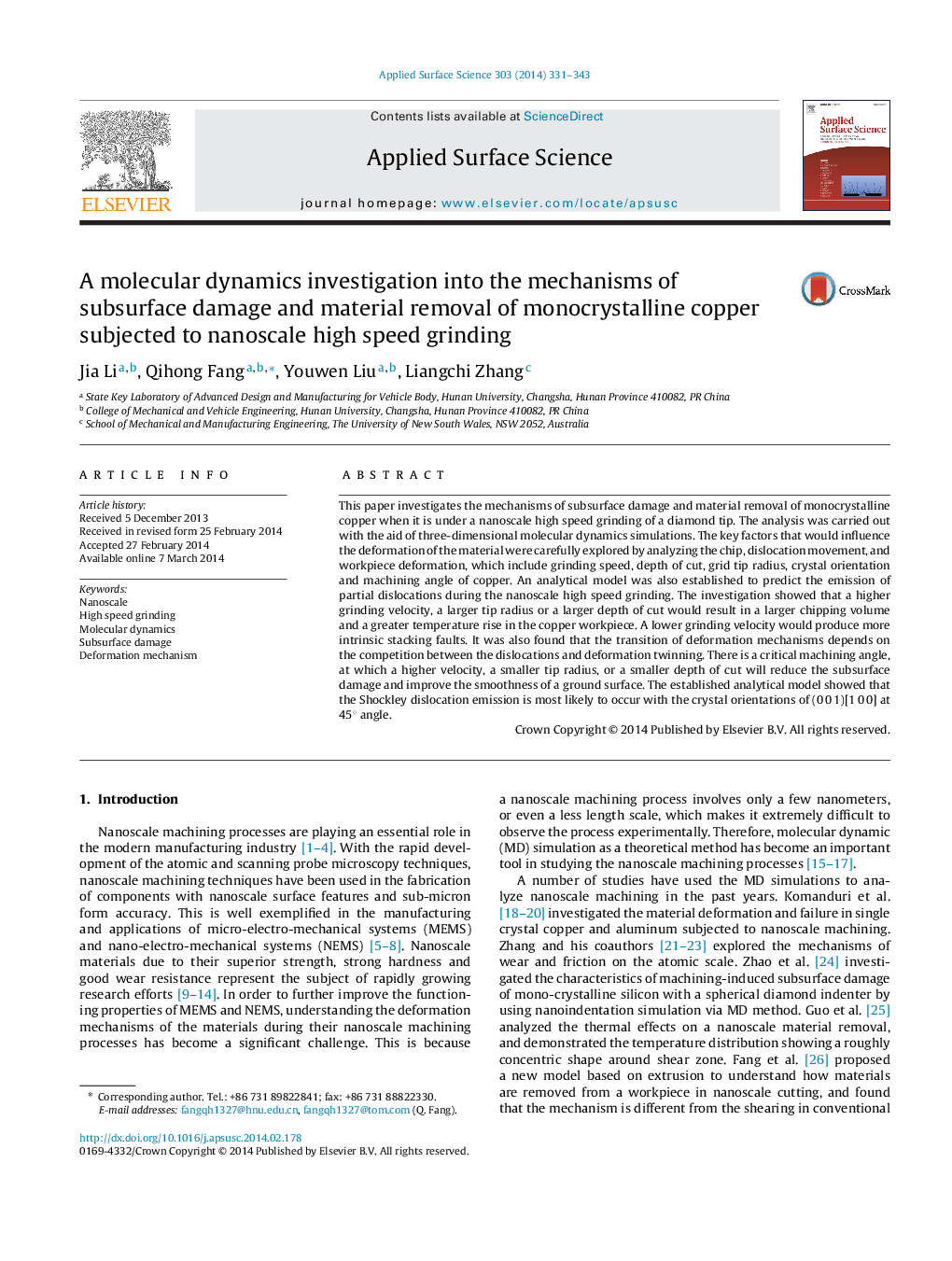| Article ID | Journal | Published Year | Pages | File Type |
|---|---|---|---|---|
| 5359217 | Applied Surface Science | 2014 | 13 Pages |
Abstract
This paper investigates the mechanisms of subsurface damage and material removal of monocrystalline copper when it is under a nanoscale high speed grinding of a diamond tip. The analysis was carried out with the aid of three-dimensional molecular dynamics simulations. The key factors that would influence the deformation of the material were carefully explored by analyzing the chip, dislocation movement, and workpiece deformation, which include grinding speed, depth of cut, grid tip radius, crystal orientation and machining angle of copper. An analytical model was also established to predict the emission of partial dislocations during the nanoscale high speed grinding. The investigation showed that a higher grinding velocity, a larger tip radius or a larger depth of cut would result in a larger chipping volume and a greater temperature rise in the copper workpiece. A lower grinding velocity would produce more intrinsic stacking faults. It was also found that the transition of deformation mechanisms depends on the competition between the dislocations and deformation twinning. There is a critical machining angle, at which a higher velocity, a smaller tip radius, or a smaller depth of cut will reduce the subsurface damage and improve the smoothness of a ground surface. The established analytical model showed that the Shockley dislocation emission is most likely to occur with the crystal orientations of (0 0 1)[1 0 0] at 45° angle.
Related Topics
Physical Sciences and Engineering
Chemistry
Physical and Theoretical Chemistry
Authors
Jia Li, Qihong Fang, Youwen Liu, Liangchi Zhang,
